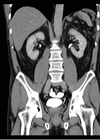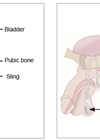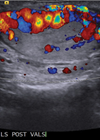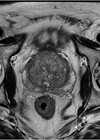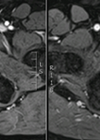Features
Surgical treatment of LUTS secondary to BPH
For the vast majority of patients an initial trial of medical therapy for the management of lower urinary tract symptoms (LUTS) secondary to benign prostatic hyperplasia (BPH) is indicated [1]. In a substantial minority of cases however, a surgical intervention...
Radiology quiz
We are delighted to introduce something new for the Uroradiology Focus – our very own Jane Belfield has put together a urology imaging quiz with 10 cases designed to grab your interest and test your knowledge. Good luck and let...
What’s new in post prostatectomy incontinence?
With an ageing population, the number of men being diagnosed with prostate cancer each year is steadily rising. With more specific investigations, such as multiparametric magnetic resonance imaging (MpMRI) and transperineal biopsies, the number of cases diagnosed at an earlier...
Small renal masses – diagnosis and management
Renal cancer is the eighth most common cancer in the UK and accounts for about 3% of all new cancer diagnoses [1]. The incidence rates are steadily rising, with the highest rates being in older men and women. This rise...
An overview of daytime wetting in children
It is estimated that daytime wetting affects one in seventy-five children over the age of five years [1]. Daytime wetting is commoner in younger children (1 in 7 aged 4.5 years, 1 in 20 aged 9.5 years) [1]. Many younger...
An introduction to research governance
Research is the process of acquiring new generalisable knowledge and should be fully integrated into healthcare work. There is a growing drive to encourage and further develop evidence-based practice in medicine so that staff and patients benefit from improved healthcare...
Imaging of varicoceles
A varicocele is a collection of dilated, tortuous spermatic veins of the pampiniform venous plexus. It is seen in 10-15% of the general population and is associated with both primary and secondary infertility. A varicocele is the most common cause...
The assessment and medical treatment of LUTS secondary to BPH
The term benign prostatic hyperplasia (BPH) describes prostate enlargement due to non-cancerous processes. Several aetiological mechanisms are involved, including hormonal and vascular alterations; abnormal regulation of apoptosis; and prostatic inflammation, which may stimulate cellular proliferation. With ageing, prostate enlargement can...
Focal therapy for prostate cancer – ready for prime time?
The current therapeutic ratio for radical therapy in many men with localised prostate cancer is not ideal. For a significant side-effect profile, there seems to be a small survival benefit over a 10-15 year period. A strategy that might balance...
An update on antibiotic prophylaxis in TRUS-guided prostate biopsy
Since its inception in the 1980s, transrectal ultrasound (TRUS)-guided prostate biopsy has remained the standard tool for the histological diagnosis of prostate cancer. There are several advantages to this technique which have led to the widespread use of TRUS in...
ICS updates in continence care: the role of the nurse continence specialist in continence services
The nurse who specialises in continence care is recognised as a key member of interdisciplinary teams seeking to deliver high quality integrated continence services. The recently published international service specifications for continence care [1] supports the use of specialist continence...
Indeterminate renal lesions – a pragmatic imaging approach
The incidence of renal cell carcinoma (RCC) in the UK has increased steadily over the last two decades, largely driven by the increasing use of abdominal imaging and the incidental detection of small renal lesions [1]. The majority of incidental...


